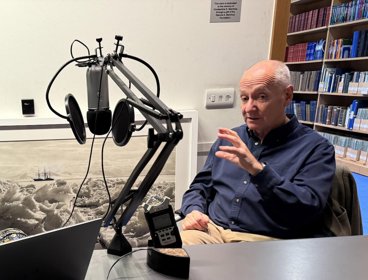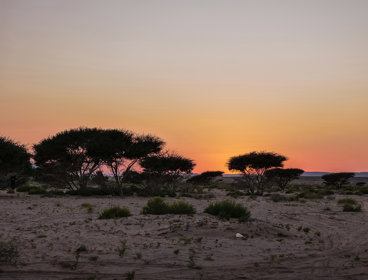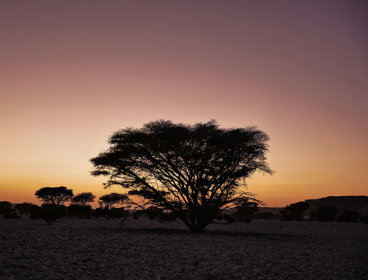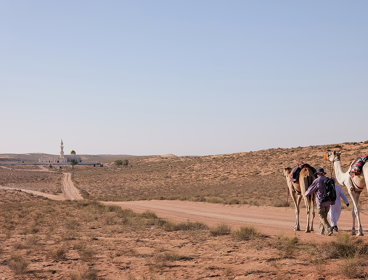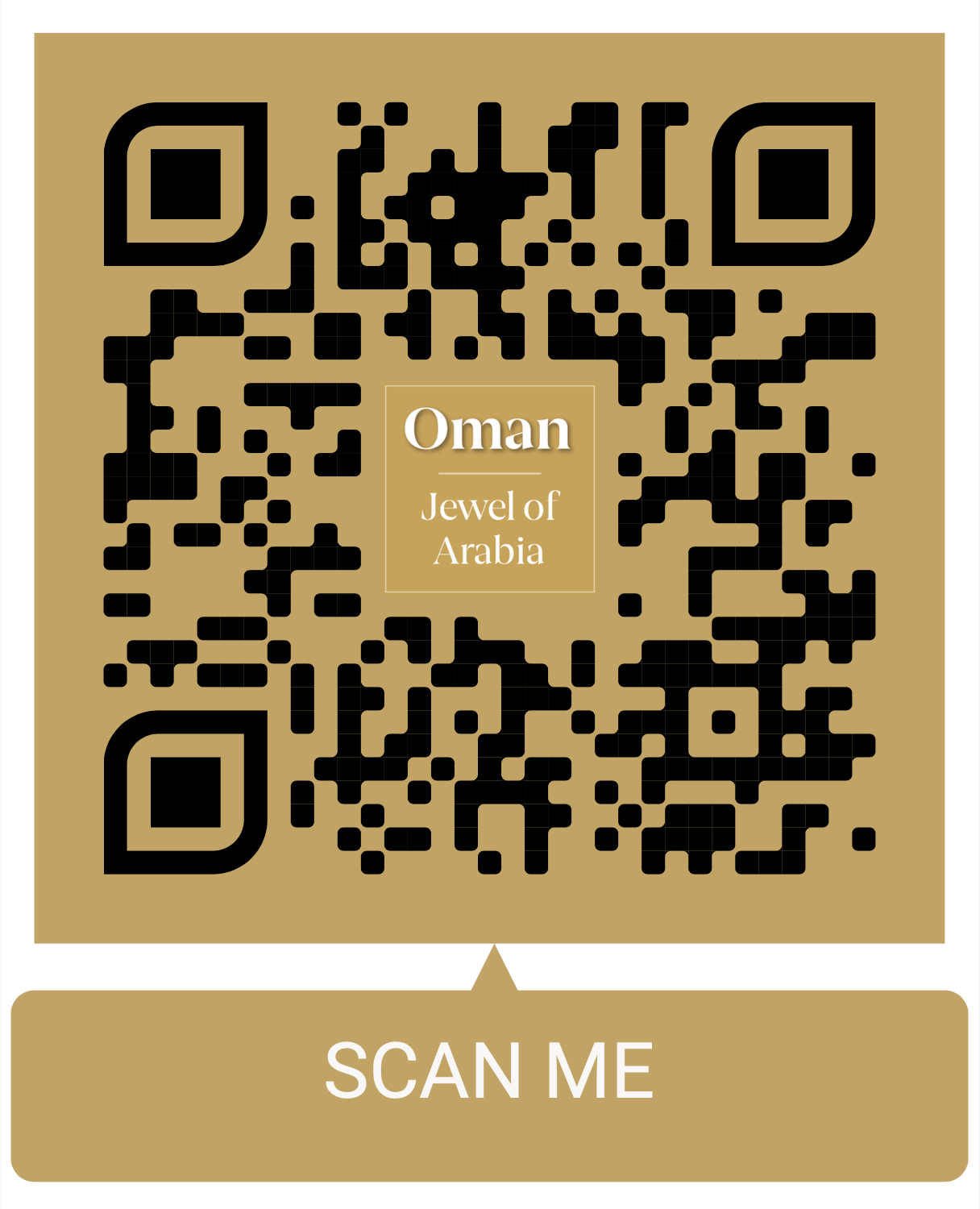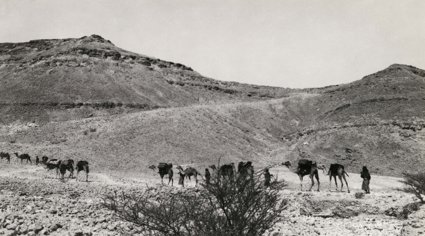
Jewel of Arabia
The Jewel of Arabia Expedition, from 6 January to 3 February 2025, is following the route taken by the British Explorer Bertram Thomas in 1928 from Ras Al Hadd, the most easterly point of the Arab world, along the coast and ending in Salalah, the second largest city in Oman. From ancient turtle nesting grounds to internationally recognised migration pitstops for thousands of wading birds, from Earthshot prize winning carbon capture innovation to the world's only non-migratory population of humpbacked whales, from frankincense groves to a future of green hydrogen and amazing raptor restaurants, Oman is awash with stories waiting to be told.
Updates from the Expedition Team
Week 1 summary
Starting in the early morning on the coast of Oman at 22°N, 57°E, overlooking the Indian Ocean, the team began their journey westward. Along the way, they navigated a variety of challenging terrains, including areas of quicksand (where, if camels were to walk on it, they would struggle for grip), thick vegetation, rocky outcrops, and vast stretches of sand. They also encountered a diverse array of wildlife including: Turns, Flamingos, Sand Grouse, Arabian Red Foxes, Swallows and Locusts.
The team needed to ask for permission from the Wāli (Governor) to cross the Sharqiya Sands — a desert roughly the size of Wales. Along their journey, they visited young people at the Outward Bound Centre, where a specially-adapted wheelchair was used (designed by Equal Adventure for use in the desert). Later, they travelled to the 1000 Nights Camp, where they met students to discuss the importance of geography in the modern world.
Week 2 summary
After 5 days in the desert, the team emerged on the coastline near Al Juwairiya to a wonderous greeting of traditional Omani dancing, music and poetry. They also saw outcrops of aeolianite (dune limestone) – thought to be one of the largest continuous deposits in the world - along the beach.
They said goodbye to the camels and crossed over to the magical Masirah Island – in local customs, home of spirits. This Island is also very special for Oman’s turtle population where thousands come ashore to lay their eggs.
From Masirah Island and onto Barr al Ḩikmān – it’s tidal flats creating an internationally recognised important wetland site for migratory birds - they took a boat trip through the mangrove forests of Mahoot Island. This week has truly been one of contrasting habitats, wildlife and culture.
Week 3 summary
The team reached the halfway point in the expedition and stopped for a well-earned ‘rest day’ to explore the amazing features and biodiversity of the Omani coastline. They also walked a route of a wādī, tracing a line of vegetation that thrives on the high water table.
They had the opportunity to meet members of another expedition - Mission Spiritus and engage in a discussion with expedition leader Alan Chambers. He shared insights into their work on the impact of plastics on the global ecosystem, highlighting the critical nature of their data collection efforts.
The week ended with a focus on the future by visiting the Arabian Oryx sanctuary where the nearly extinct species was reintroduced to Oman. They also went to the Nimr Reed Beds, which help purify water used in oil extraction and also act as a wetland haven for migrating birds.
The Royal Geographical Society has created an ArcGIS StoryMap that shows the route along with accompanying information, so students and teachers can engage with the journey. This resource will be regularly updated with photographs and other media as the team make their way along the route. You can ask the Expedition Team questions using Slido below. We cannot guarantee that every question will be submitted and receive an answer, but you will see updates as they appear.
Click here to view the StoryMap for updates on the team’s progress and to access information about the places being visited
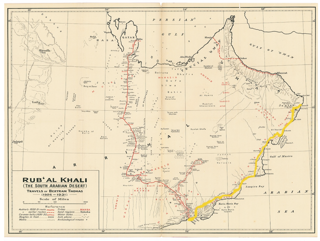
In addition to completing the route Mark Evans and the team are undertaking, Bertram Thomas was the first European to cross the largest sand desert (1930-1931) and he was the advisor to the Sultan of Oman (1926 and 1930). In 1932 HRH King George V approved his Royal Geographical Society Founders Medal award, in recognition of his great desert journeys.
As a charity, professional body and learned society the RGS is the home of exploration, and with more than 16,000 members it reaches millions of people each year through its work to advance geography and support geographers. The Society is proud to be a Jewel of Arabia expedition partner. It will produce a range of resources to accompany the 30-day expedition, as the team pass through or close to many of Oman's biodiversity hotspots. The resources are designed to support the KS2 (age 7-10), KS3 (age 11-14), GCSE (age 14-16) and A Level (age 16-18) Geography Curriculum, with the materials also being relevant to wider international audiences. Dryland landscapes will be profiled to support A Level Geographers and there will be a focus on biodiversity and sustainability for all of the levels of study.
Our ‘Ask the Geographer’ podcast series features two podcasts with the Expedition Leader, Mark Evans MBE FRGS.
A series of podcasts is also available on the expedition site.
The Society will work with the British School Muscat and provide online training tailored to schools in the Middle East, British schools overseas and schools in the UK to help them get the best out of the resources. It will provide information for young Omani citizens to consider possible work in the ‘new industries’ using Green Skills and more generally highlight opportunities for students in other countries, including the UK, including featured initiatives. Oman has set robust targets as a global green energy hub, as it concentrates on the carbon to green transition and adoption of green hydrogen, among other innovative steps. Comparisons will be drawn between life and landscapes in Oman and the UK to accompany the learning materials, drawing particularly on the experiences of those who have lived or travelled in both countries.
